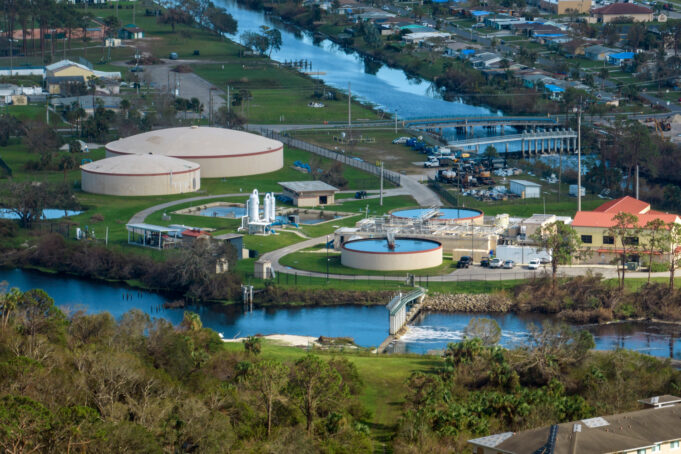Federal dollars are flowing again, and if you’re in water treatment, now’s the time to pay attention. From wastewater upgrades to creek restorations and new groundwater facilities, projects are stacking up nationwide despite a brief funding freeze under the new administration. The Environmental Protection Agency’s $6.2 billion FY2025 allocation is still driving momentum, and multiple cities are pushing forward with construction timelines and bid solicitations for 2025 and 2026. The scope of work includes aging infrastructure replacements, regulatory compliance improvements, stormwater upgrades and ecological restorations, representing rich opportunities for vendors, engineers, operators and service providers in the industry alike.
Focus on Wastewater
Le Mars, Iowa, is committing $155 million to expand its wastewater treatment plant. The project includes a new lift station, anaerobic pretreatment for high-strength flows, and a biosolids lagoon. This isn’t just a rehab job. The expansion is designed to accommodate increasing residential and industrial volume while ensuring state environmental compliance.
In Michigan, Traverse City is planning a $41 million overhaul of a wastewater facility originally built in 1932. New primary clarifiers, effluent screw pumps and a UV disinfection system will bring the aging plant into the 21st century. Notably, the disinfection system will be elevated to withstand high water conditions, an example of climate resilience being baked into infrastructure planning.
Both projects share a theme: aging infrastructure that’s past its prime is being phased out in favor of modern systems with higher efficiency, capacity, and resilience. For plant operators and engineers, this means big shifts in technology integration, operational training and maintenance protocols.
Targeting Contaminants at the Source
Norman, Oklahoma, is designing a groundwater treatment facility that zeroes in on emerging contaminants such as arsenic, chromium, and lithium. The 28-acre site will host centralized process operations, chemical dosing systems, stormwater detention, and even rain gardens.
What stands out here is the facility’s focus on both regulatory compliance and community health. We’re seeing a growing interest in removing traditional pollutants along with compounds that are increasingly drawing attention from environmental watchdogs. This kind of project signals a pivot toward treatment processes designed for a broader spectrum of contaminants, many of which are likely to become regulatory priorities over the next decade.
Nature-Based Solutions Are Gaining Ground
The $75 million Westside Creeks restoration in San Antonio is a multi-purpose project restoring habitat, improving stormwater function, and reintroducing native vegetation across the Martinez Creek Watershed. By pulling out concrete linings and returning streams to a naturalized state, planners aim to boost water quality and biodiversity.
This approach reflects a wider trend: using green infrastructure to enhance gray systems. If your operations intersect with stormwater management, this is your cue to start thinking beyond pipes and pumps. Nature-based solutions are proving their value for flood resilience, pollutant filtering and community engagement.
Parks and Water Infrastructure Cross Paths
At Crater Lake National Park, a $50.8 million trail and marina overhaul may seem like a recreational project, but don’t overlook its water infrastructure implications. The plan includes rockfall mitigation, new marina facilities, and restroom infrastructure, all on sensitive terrain with substantial seasonal water flow. While not a traditional water treatment project, it underscores how water-related infrastructure is being integrated into tourism, public safety and land conservation planning.
Why This Matters Now
Even with political uncertainty and brief funding pauses, federal and local commitment to water infrastructure is strong. The projects outlined here are all slated for late 2025 or 2026 construction. That means procurement teams are mobilizing this year. If your firm provides engineering, technology, equipment, or compliance services, the time to act is now.
These upgrades are part of a national wave addressing deferred maintenance, environmental compliance, and future water demand. Watch for more solicitation announcements in Q3 and Q4. Whether you’re on the ground at a treatment plant or helping write the RFP, this is a chance to align your operations with where the real investment is happening.
SOURCES: Smart Water Magazine, Le Mars Sentinel, The Traverse Ticker, KOCO 5 News, San Antonio Express-News, National Park Service



